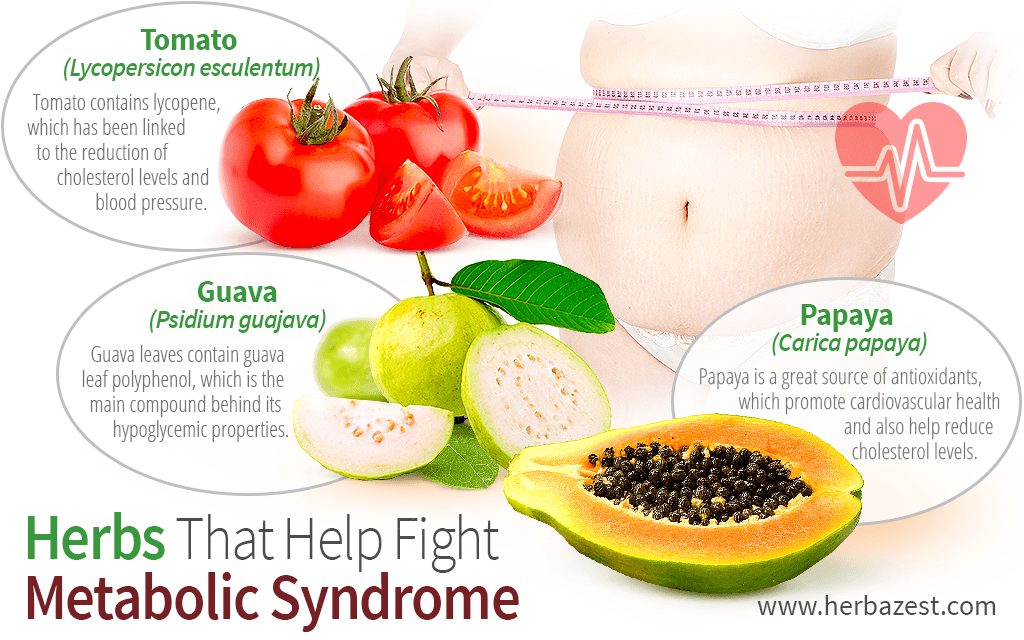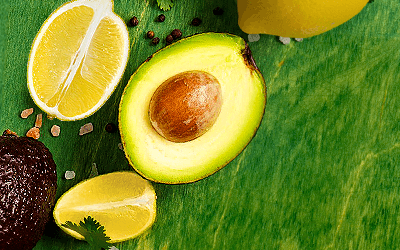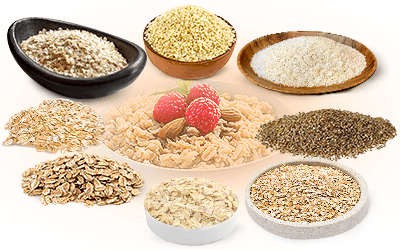Metabolic syndrome is the name for a group of conditions that elevates one's risk for heart disease, stroke, and diabetes. According to the National Heart, Lung, and Blood Institute, the term "metabolic" refers to the biochemical processes involved in the body's normal functioning. Risk factors can be defined as traits, conditions, or habits that increase one's chance of developing a disease.
Five conditions are defined as metabolic risk factors: high fasting blood sugar, high blood pressure, low HDL (the "good" cholesterol), high level of triglycerides, and a large waistline. Having at least three of these conditions leads to a diagnosis of metabolic syndrome.
The good news is that action can be taken before conditions get out of hand. There are three herbs that help fight against the risk factors before they begin or become worse.
1. Tomato (Lycopersicon esculentum)
Tomato is believed to be the second most popular "vegetable" in the world after the potato, but most are unaware that it is really a fruit that boasts health benefits.
Tomatoes are high in vitamins A, C, and E as well as other important minerals, like potassium, phosphorus, manganese, and magnesium. Its primary active compound is lycopene, which is found mostly in the skin of the fruit and has strong antioxidant properties.
These compounds have been linked to cardioprotective effects, including the reduction of cholesterol levels and blood pressure, which, in turn, leads to a decreased risk of stroke. Try a tasty, yet simple topping of basil tomatoes and start reaping the benefits of this versatile herb.
2. Guava (Psidium guajava)
Traditionally, guava leaves have been used to help treat gastrointestinal disorders like diarrhea as well as fever, cough, mouth sores, and wounds.
The guava fruit is widely consumed and rich in vitamins and nutrients, mainly vitamin C (ascorbic acid), other antioxidants, and fiber. However, it is the guava leaves that exhibit great medicinal properties. They contain a unique phytonutrient called guava leaf polyphenol, which is thought to be the main compound behind the plant's hypoglycemic properties. It works by inhibiting some alpha-glucosidase enzymes, thereby controlling blood sugar levels. Guava leaf has also been shown to reduce LDL cholesterol levels, though the mechanism is not well-defined.
Guava juice is a popular form of consuming this delicious fruit to gain all its benefits; however, be aware that commercial, canned guava juice may contain a fair amount of sugar as well as artificial coloring. Go for natural, sugar-free options.
3. Papaya (Carica papaya)
On the nutritional side, papaya has shown to be a great source of vitamins - like B9 (folate) and E - and minerals, such as calcium, magnesium, and potassium. It is also rich in dietary fiber.
Papaya is also an excellent source of antioxidants, such as beta-carotene - a precursor of vitamin A - and vitamin C, which prevents the cellular damage caused by free radicals and promotes cardiovascular health. It also helps regulate cholesterol levels due to its high dietary fiber content.
There are many ways to incorporate papaya into your daily diet: fresh and diced, in juices, or as a delicious avocado and papaya salad.
Consuming these tasty foods on daily basis can contribute to improving your diet and keeping away metabolic syndrome. Take action today for a healthier tomorrow!
Sources
- Cleveland Clinic, Antioxidants, Vitamin E, Beta Carotene, and Cardiovascular Disease
- Critical Reviews in Food Science and Nutrition, Tomatoes and Cardiovascular Health, 2003
- National Heart, Lung, and Blood Institute, What is Metabolic Syndrome?
- Nutrition & Metabolism, Anti-hyperglycemic and anti-hyperlipidemic effects of guava leaf extract, 2010
- Purdue University, Papaya: Carica papaya L.







